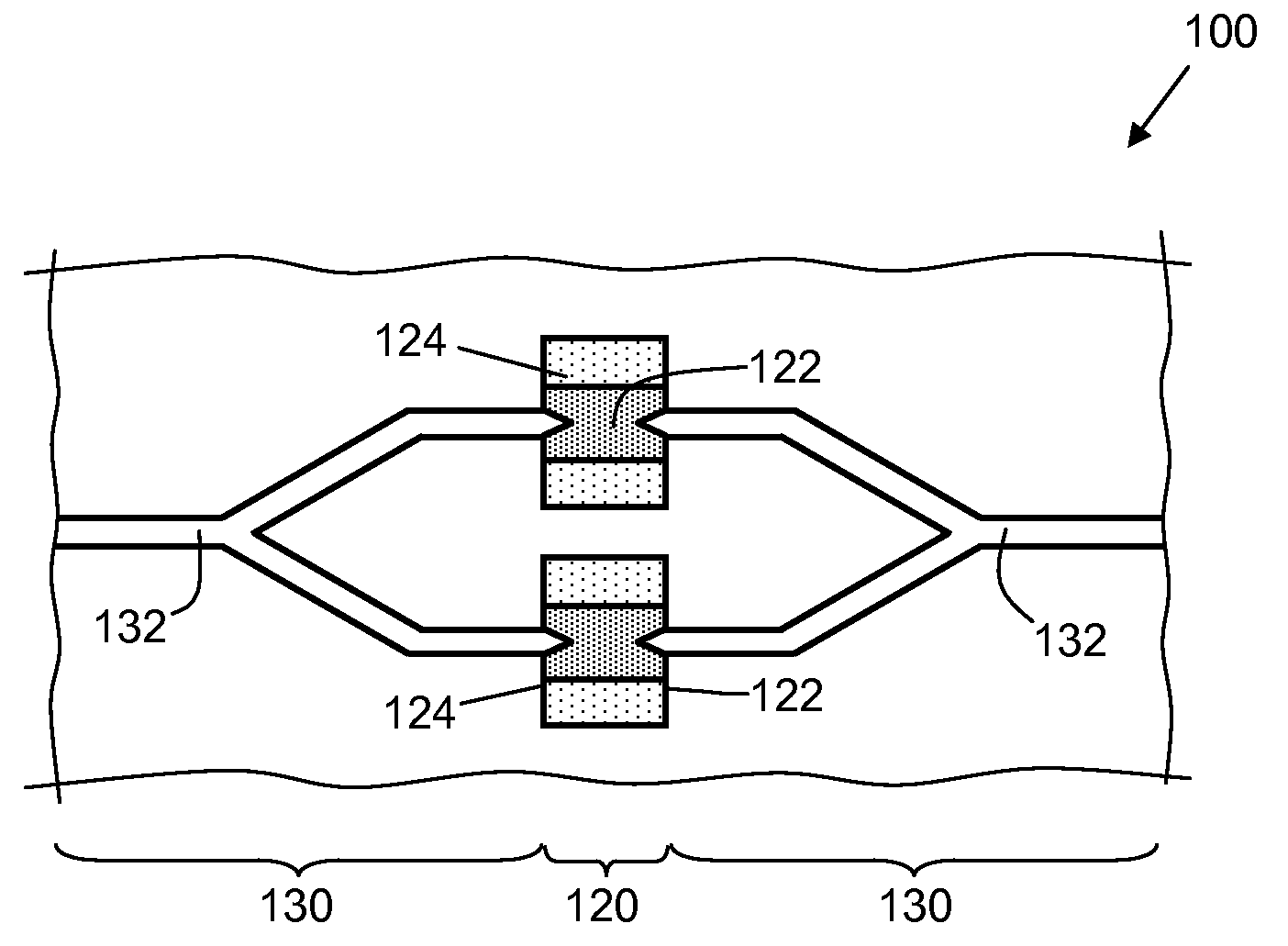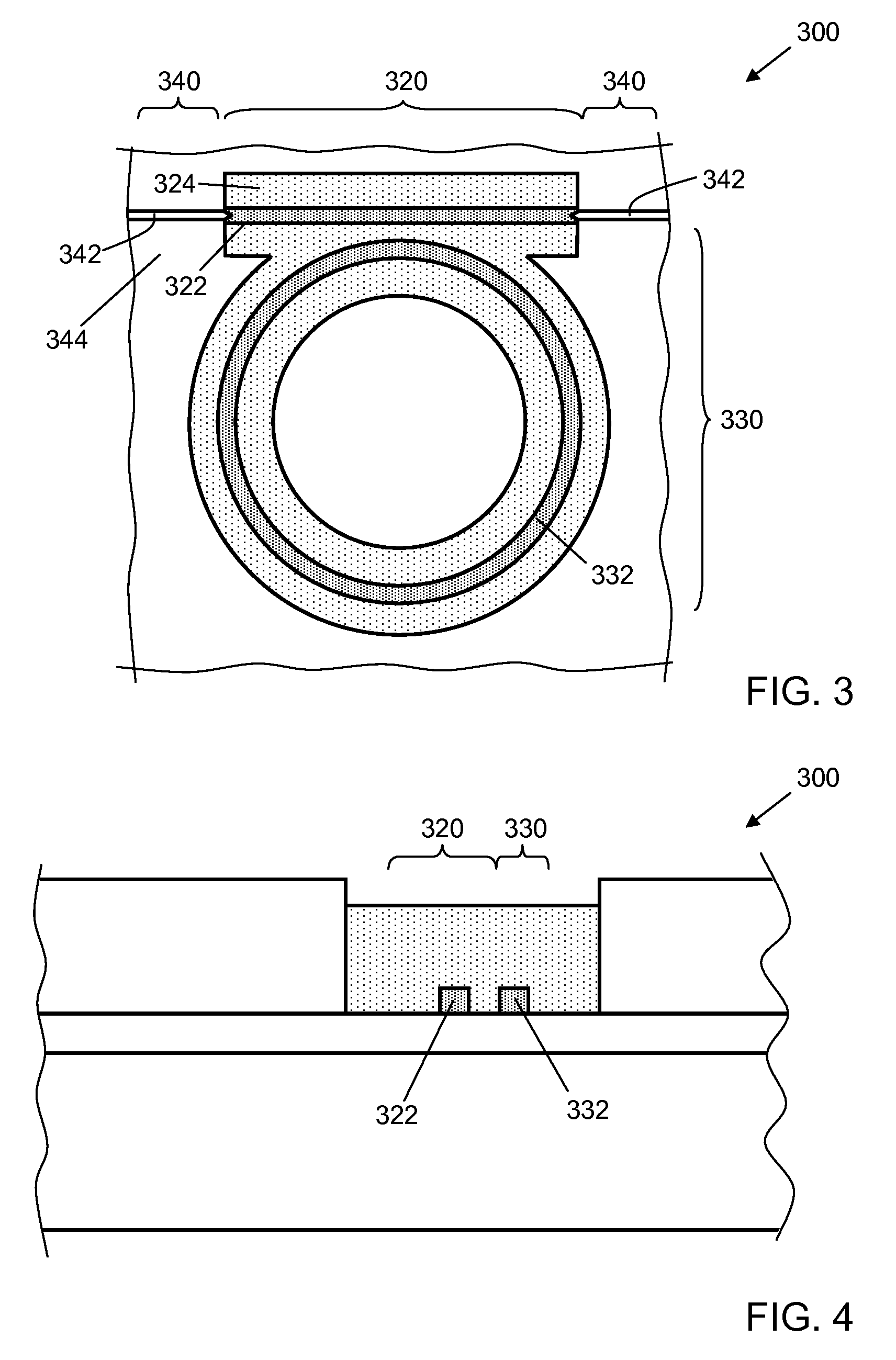Optical Waveguide Sensor Devices and Methods For Making and Using Them
a sensor device and optical waveguide technology, applied in the field of optical waveguide-based sensor devices, can solve the problems of large monitored equipment, difficult use of mass spectrometer-based systems in distributed and in-process sensing applications, and pollute the environment itself with detritus, etc., to achieve more functional and/or less expensive devices, the effect of high sensitivity
- Summary
- Abstract
- Description
- Claims
- Application Information
AI Technical Summary
Benefits of technology
Problems solved by technology
Method used
Image
Examples
Embodiment Construction
[0053]One aspect of the invention is an optical waveguide sensor device. One embodiment of such a device is shown in top schematic view in FIG. 1 and in side cross-sectional schematic view along one of the waveguide arms in FIG. 2. Optical waveguide sensor device 100 includes a substrate 102; and a device layer 110 disposed on the upper surface 104 of the substrate 102. The device layer 110 includes one or more sensing optical waveguides 120, each of which is formed from a polymer material system or an organic / silicate hybrid material system. The device layer also includes one or more inert inorganic optical waveguides 130 operatively coupled to at least one of the sensing optical waveguides 120.
[0054]The substrate can be any substrate suitable for use in optical waveguide devices. For example, the substrate can be a silicon substrate, a glass substrate, or a plastic substrate. In one embodiment of the invention, the substrate and the device layer are formed from the bulk wafer and ...
PUM
 Login to View More
Login to View More Abstract
Description
Claims
Application Information
 Login to View More
Login to View More - R&D
- Intellectual Property
- Life Sciences
- Materials
- Tech Scout
- Unparalleled Data Quality
- Higher Quality Content
- 60% Fewer Hallucinations
Browse by: Latest US Patents, China's latest patents, Technical Efficacy Thesaurus, Application Domain, Technology Topic, Popular Technical Reports.
© 2025 PatSnap. All rights reserved.Legal|Privacy policy|Modern Slavery Act Transparency Statement|Sitemap|About US| Contact US: help@patsnap.com



